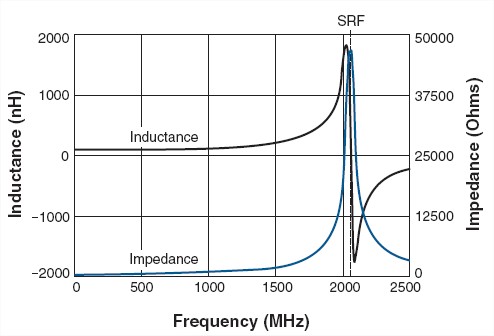ah.vinod
Junior Member level 2
In RF designs, why should a Inductor should not be operated above SRF region even though just above SRF the impedance is still High. I am looking for RF choke application used in typical LNA MMIC. i am using 1 uH inductor whose SRF is 400MHz while my frequency of operation of LNA is 40MHz to 860MHz. Untill 860MHz the RF Choke or inductor is having Impedance in Kilo Ohms. so can i go ahead and use it. attachment shows my application circuit
